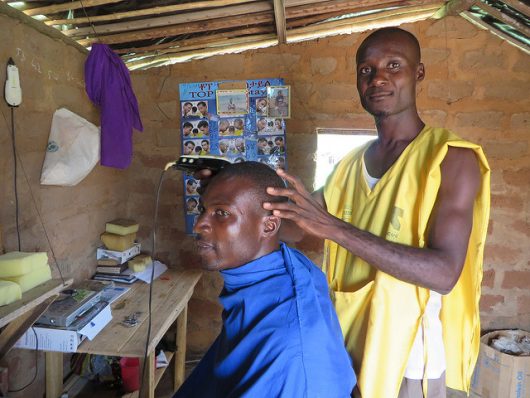Credit Access in Côte d’Ivoire

Recent reports indicate that the economic performance of the country of Côte d’Ivoire’s is improving. In 2016, the Ivorian government committed to a National Development Plan designed to transform the country into a middle-income economy by the year 2020. A quick analysis indicates that these efforts have been successful so far. In fact, the country’s economic growth between 2016 and 2017 has it ranked among the most booming economies in Africa. Unfortunately, this growth has not translated into increased credit access in Côte d’Ivoire.
The Importance of Credit Access
In 2017, only 1 in 7 Ivoirians had an account with a financial institution. This statistic has remained unchanged over the past year. Since banks and other formal financial institutions are the primary providers of credit, a lack of access to these institutions can have major effects. Credit is often used to fund education, pay medical bills and purchase property. It is an essential tool in working toward socio-economic mobility. Thus, increasing credit access in Côte d’Ivoire is a crucial step toward improving the lives of the 46 percent of Ivorians currently living in poverty.
Limitations on Credit Access
According to the 2017 Global Findex Survey, the greatest obstacle preventing Ivorians from opening a bank account is a lack of sufficient funds. Roughly two-thirds of Ivorians cite this as the primary reason they do not have an account. Associated account fees are an additional barrier for nearly a third of the population. Other obstacles include a lack of necessary documentation, distance from a physical bank and a lack of trust in these institutions. As a result, more than half of the adult population has never used formal financial services.
The prospects of obtaining an account are even grimmer among disadvantaged populations. The poor are twice as likely as their more prosperous counterpart to be excluded from using formal financial services. Women are 45 percent more likely to be excluded than men; the gap between men and women’s access to financial institutions has risen by 90 percent in the last three years.
Even if an individual overcomes these obstacles, the possession of an account does not guarantee access to credit. Although 15 percent of Côte d’Ivoire’s adult population had a financial institution account in 2017, only 3 percent of Ivorians have borrowed from a financial institution or used a credit card. If a loan is needed, the most common solution among Ivorians is to borrow from friends and family. In fact, only 34 percent have ever borrowed outside of the household.
Mobile Money as an Alternative
While participation in traditional financial institutions remains low, Ivorians are finding other digital means to manage their money. Over the past decade, mobile money has been on the rise. Mobile money is essentially a digital wallet – its basic functions allow users to store, send and receive money as though it were cash. As of 2017, roughly 42 percent of Ivorians have a mobile money account. Moreover, statistics show that mobile money accounts are more accessible to disadvantaged populations.
While mobile money has helped circumvent the barriers associated with traditional banking, it is not designed to offer credit access in Côte d’Ivoire. Digital credit lenders are operating in several sub-Saharan economies, but they have yet to emerge in the Ivorian economy.
However, surveys suggest that Ivorians would welcome these new services. 59 percent of Ivorians express interest in using a digital credit product. Their decision to participate would depend on interest rates and associated fees, the feasibility of the repayment plan and the speed at which they can access the loan. Half of the Ivorians surveyed indicated they would be willing to pay 10 percent interest for a six-month loan if a CFA 100,000 digital loan was made available to them.
The introduction of these new digital credit services could have a profound impact on the Ivorian poor. However, in order to maximize the impact, additional materials must be provided to address low rates of technological and financial literacy. Although 87 percent of Ivorian adults have access to mobile phones, only 50 percent possess a feature phone or smartphone, which is necessary to access the digital financial services. Even fewer know how to navigate the phone’s interface, and even if they can navigate the interface, only 33 percent are considered financially literate. This means that a large group of new credit users in the country may be vulnerable to hidden fees and marketing fraud. Nonetheless, if provided with the proper assistance to improve financial and technological literacy, these digital alternatives to traditional banking could prove to be an effective solution to limited credit access in Côte d’Ivoire.
– Joanna Dooley
Photo: Flickr
